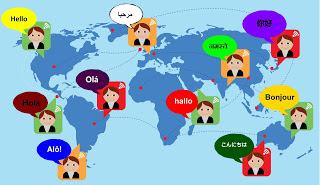Multilingual Web Design - The 10 Essential Elements You Should Know.
Multilingual websites are becoming more and more popular every day. The main aim of these sites is to target users in different countries around the globe. Examples of multilingual websites may include; a blogs on English Football available in both Spanish and French or an American business with a French and a Canadian version of its site. There has been a trend lately for travel and tourism websites to invest in multi lingual sites.
Stretching your website to cover multiple countries and languages could prove very challenging because now you need to find writers who can write in all these other languages. Brian from keen.com.mt said that the most challenging part for them when designing a multi lingual site is building the client facing CMS to easily and intuitively allow for content management.
Multiplying the versions of your websites means that any issues and problems will be multiplied as well. Ensure that you test your original website as keenly as possible so that the platform and background for your other secondary sites are as strong as possible.
Now let us discuss the 10 essential elements and guidelines for multilingual websites.
1. Global getaways.
As you are creating your global templates, make sure that you also design your global getaway with the user in mind. A global getaway is a navigational tool that helps users locate the specific localized versions of your website with ease. The most appropriate locations for the getaways is either at the top or the bottom of your multilingual website.
How you design and also place your global getaway is important too. If it is hard to find or is only available in a source language that your user does not understand, they will probably give up and search other websites for information. One of the major design of global getaways is the drop down box. Here, the user selects their language from a scrolling list.
2. Ensuring that every single language version of your website is easily accessible.
This is made possible by keeping the content for each language on different URLs.You should also avoid using cookies to show translated versions of your page. Cross-linking each version of a page is the best way to go. This enables a Spanish user who lands on the Chinese version of your page to get the right version just by a single click.
3. Content Management Systems
Content management systems allow you to control and manage the product inventory and content from one central place.
4. Formatting time and date conventions to accommodate global variations
Calendar date formats do vary around the globe. A good example is in the United States where a month/day/year is used. Sunday is also considered the start of the calendar week. While in France, a day/month/year format is used, and Monday is the start of each calendar week. Time formats also vary with different regions.
5. Google and language recognition
To make language identification a lot easier, Google recommends that you use only one language per page. Google tries to figure out the main languages of your pages itself.
6. Search Engine Optimization
Ensure that the SEO is carried out in multiple different languages. You should also build links from websites in the target country. Let's take www.atlantisgozo.com as an example. This diving website has 5 languages, english, german, french, italian, and polish. The website ranks really well in google for multi lingual keywords, like the German keyword "Tauchen Malta" meaning, diving in Malta.
Reason being that links were not only sent to the home page but to each language page, to keep with the example https://www.atlantisgozo.com/de/. So now all the language page have power going to them, from relevant domains.
7. URL structures
A URL structure that makes it easy for google to identify languages. Ideally you should use pages not sub domains.
8. Utilizing icons, images, and other several elements that are contextually applicable as well as culturally fit.
Photographs, icons, commercial graphics, and symbols are said to be very subjective. The effects are even bigger after website translation. Different designs may bring out different emotions in different regions. Avoid using religious symbols, animals, or even images of hands. One of the most commonly used symbols is the global icon to represent something international.
9. Font sizes
It is important to note that the font size you chose to use for your original language may not suit all the other languages. It is, therefore important that you use font enhancing techniques for different languages.
10. Word lengths
The length of words is different for various languages. The design of your website should cater for the various length of words used throughout the site. Having said that, hiring a professional content writer is 10 times better than installing a language conversion plugin using google translate. Google translate is a great tool, BUT has its flaws. There's nothing better than having an article re-written by a native speaking writer.
In addition, you could make sure that the infrastructure you are using to host your website is good enough to support these pages. Multi lingual websites are huge in nature and demand larger servers. Several companies and websites are increasingly using multilingual websites. If you are not taking advantage of multi lingual searches, you are leaving a ton of money on the table.
Multilingual Web Design - The 10 Essential Elements You Should Know.
 Reviewed by Awesome Blogs
on
5:29:00 PM
Rating:
Reviewed by Awesome Blogs
on
5:29:00 PM
Rating:
 Reviewed by Awesome Blogs
on
5:29:00 PM
Rating:
Reviewed by Awesome Blogs
on
5:29:00 PM
Rating:








No comments: